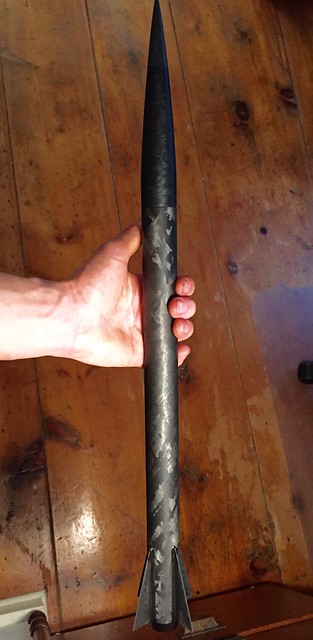No problem! This is nothing, you should have seen the last MD thread I did - like 3 full pages of people arguing about stability calculations at mach+ speeds :lol:

For me its usually whats available - i.e. the common 5:1 length:diameter ratio that most of the FWFG cones are. I haven't made any of my own NC's yet simply because (a) I can't make them out of CF because of the trackers, so it has to be FG anyway (b) they're cheap, and the smooth insides and removable couplers are better quality than I could easily get (c) the thin-wall versions are already pretty light and less crazy-overkill. Doing one myself would be a lot of work for not very much gain. I was close to breaking down and making a 29mm one, but then RW put on sale the mongoose with its FWFG nose cone and it was problem solved

If I was designing my own, I would probably size them to be at least 3:1 for drag reasons (less than that I think is measurably less efficient), and build it however much longer than that as dictated by either the electronics/antennas I needed to fit in there, or like in this build, recovery stuff. On the high end I probably wouldn't go past 8:1, as it starts to get long and heavy without (I think) much gain in performance or useable internal volume.
Cool! I think a lot of people jumped on the mongoose 29! Based upon my last 29mm MD which was very similar in exterior form/mass to a stock mongoose 29 (except with a draggy conical NC) that got just under 10,000', I think a nicely finished, stock mongoose 29 should be capable of ~11,000 given a nice day and straight flight. Something about putting a rocket 2(+) miles up on (comparatively) inexpensive 29mm motors is just so awesome :smile:








